Portugal Wildfires: Rapid Delivery of Satellite Imagery in Emergency Situations
- European Space Imaging
European Space Imaging accepted overnight orders to deliver Very High Resolution satellite imagery for the Copernicus Emergency Management Service (EMS) in response to devastating wildfires in Portugal.
Dozens have been injured and hundreds displaced as multiple massive fires burn in central Portugal. As firefighters battle day and night, European Space Imaging works around the clock to collect and deliver current Very High Resolution (VHR) satellite imagery that is crucial for emergency responders to make informed decisions. These images were ordered by the Copernicus EMS to create maps for emergency responders, so they can assess their strategies on a daily basic.
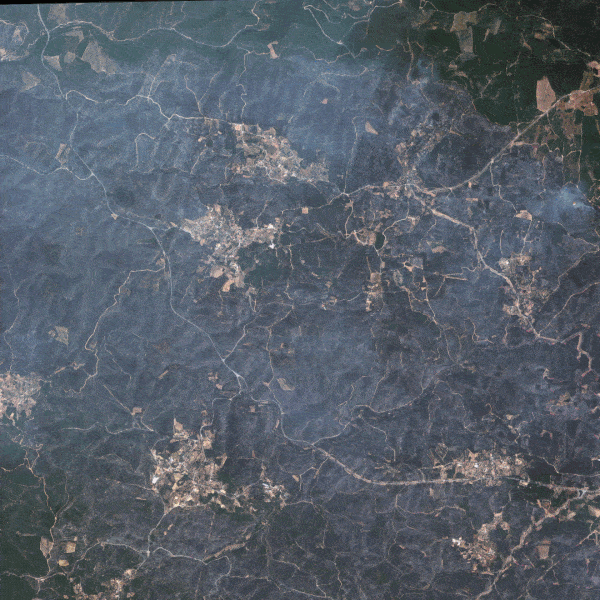
Animated GIF showing a satellite image in real colour and false colour as well as the derived delineation map of the burned areas in one particular Area of Interest (AOI) ©European Space Imaging
Emergency Satellite Imagery Activation
Multiple fires began on 20 July, 2019 near Castelo Branco under suspicious circumstances. Hours later, the Copernicus EMS Rapid Mapping Module was activated in order to provide First Estimate Product and Delineation maps to National Command for Relief Operations – National Authority for Civil Protection in Portugal.
24 Hour Emergency Service Provider
The Copernicus EMS placed the satellite imagery tasking order with European Space Imaging just after midnight, local time on 22 July. European Space Imaging is able to accept emergency orders 24/7 as it partners with Maxar Technologies to fulfil after hours tasking requests. The ability to place an overnight order and have the first available satellites collect images in the morning means that maps that are essential to the firefighting and evacuation efforts can be delivered and utilised within hours.
GAF AG, a valued partner of European Space Imaging, was relied upon for rapidly producing the necessary maps based off of the collected imagery. The images were used for Delineation maps which provide an assessment of the event impact and extent. For this, it is necessary to have images acquired as soon as possible after an emergency event.
Multi-Spectral Imagery for Emergencies
European Space Imaging operates the WorldView Satellite Constellation as is passes over Europe and North Africa. The images delivered for this emergency activation were from the WorldView-3 satellite. WorldView-3 is able to collect 30cm resolution images with up to 16 spectral bands including 8 SWIR bands. The importance of these spectral bands cannot be overstated. Applications include analysing plant health, identifying material composition or in forest fire situations, identifying burned areas.
The interactive sliders below depict natural and false colour satellite imagery of 4 AOIs within the wildfire. In the false colour images, red denotes healthy vegetation while the black/grey areas are burned vegetation. The distinction is much clearer than the natural colour images.
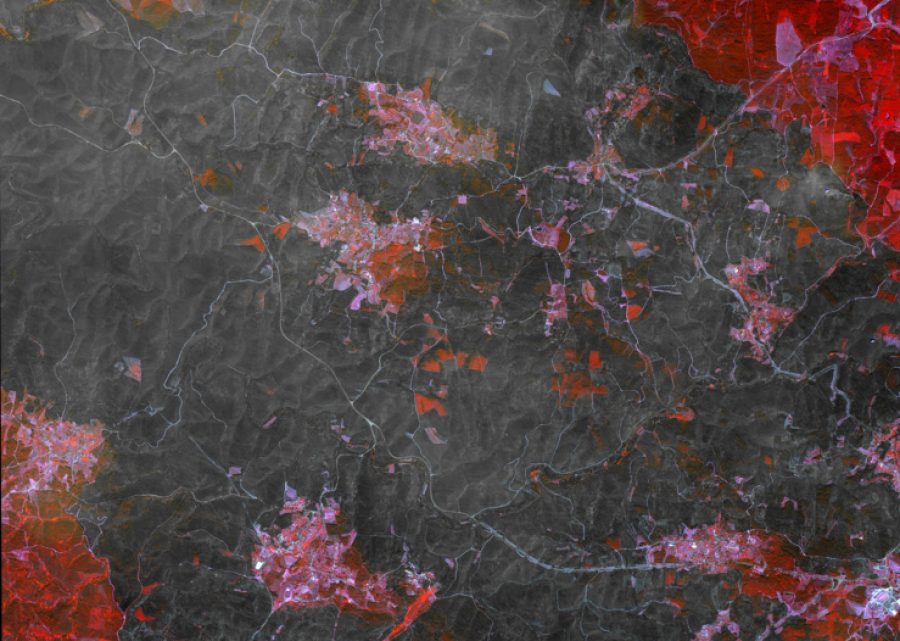
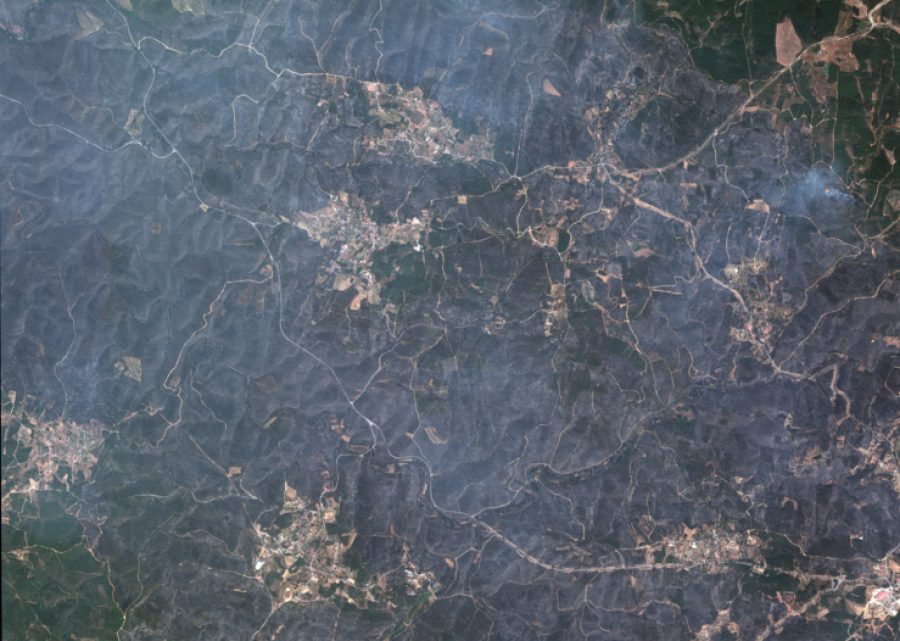
©European Space Imaging
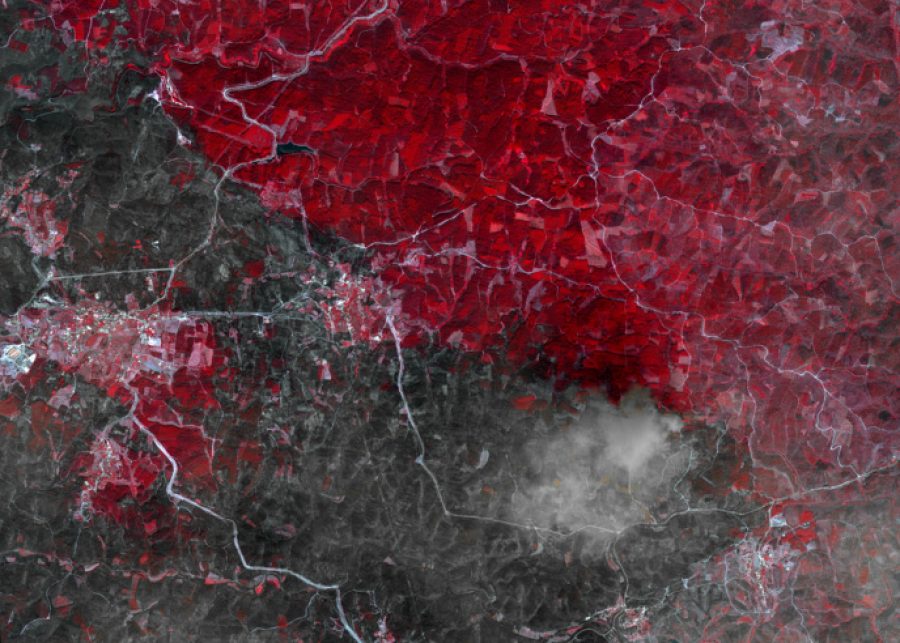
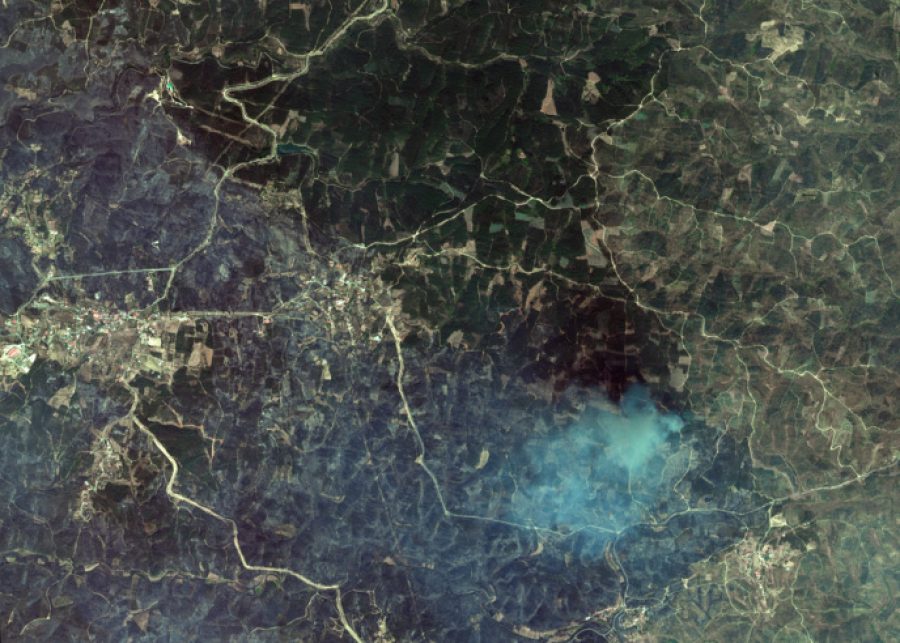
©European Space Imaging
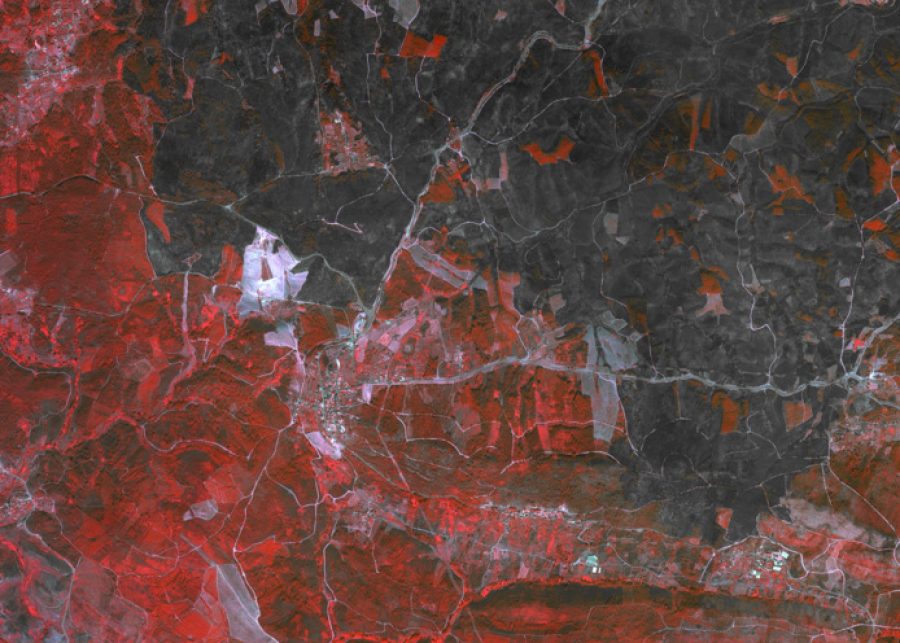
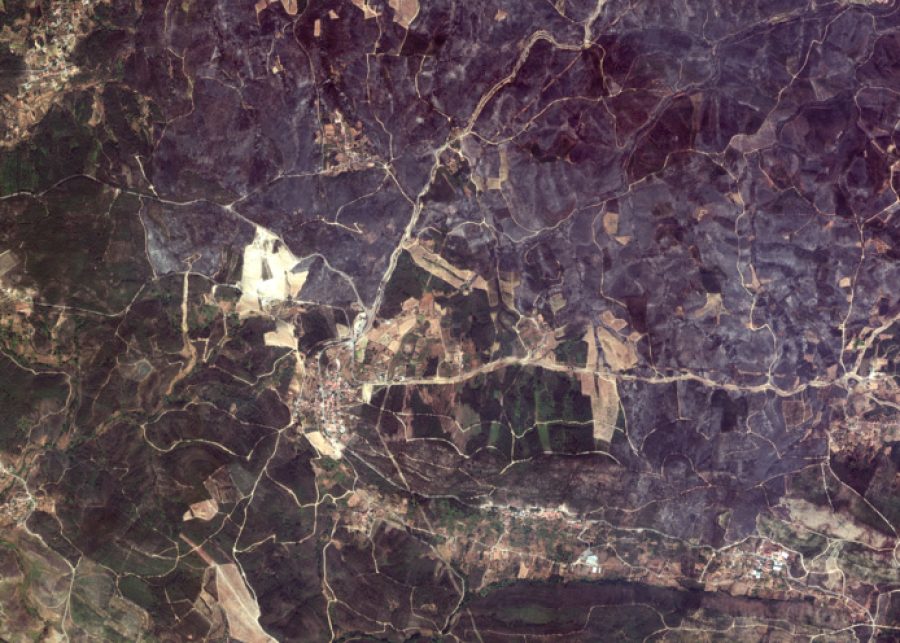
©European Space Imaging
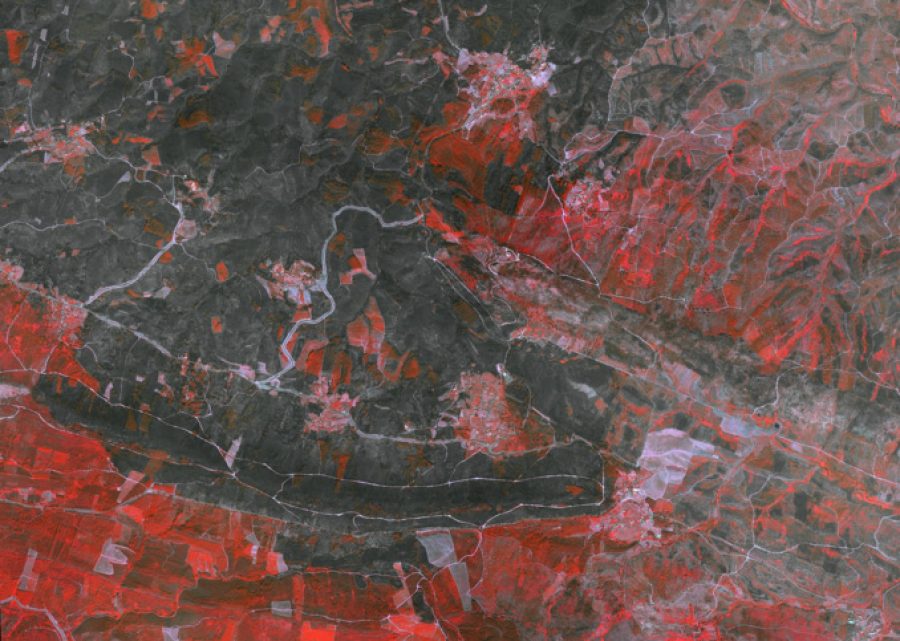
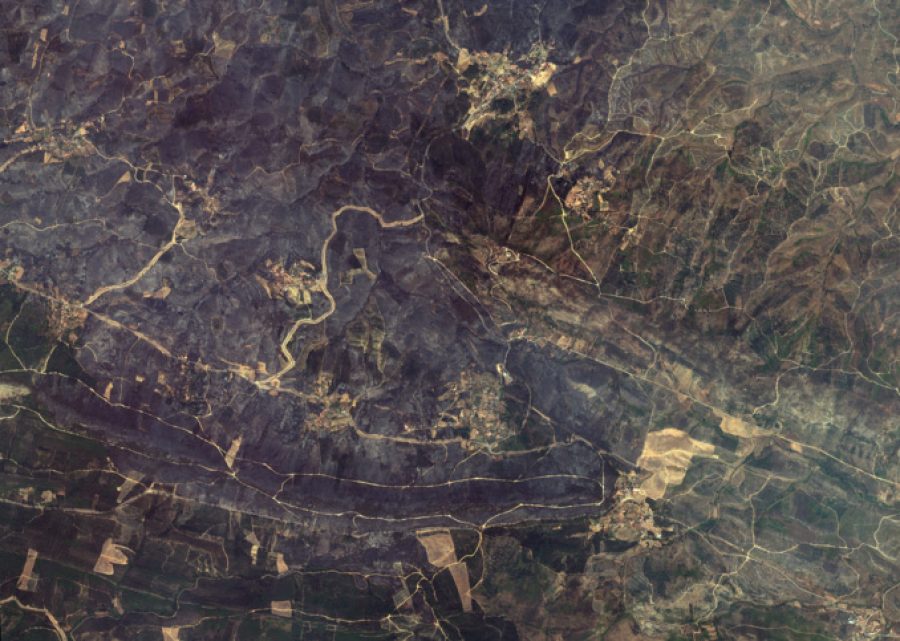
©European Space Imaging
European Space Imaging will continue to monitor the ongoing fires in Portugal and work closely with the Copernicus EMS to fulfil any more emergency satellite imagery needs.
To learn more and download the map products, visit Copernicus EMS.
Related Stories

GEOSeries: Extracting Insights From High Resolution SAR Imagery for Time-Sensitive Analysis
In this webinar, industry experts and advanced users of Umbra SAR data showcase how they transform SAR imagery into actionable insights in real-world mapping, monitoring and intelligence applications. See how NV5 and Umbra leverage ENVI SAR Essentials for advanced processing with time-efficient results, converting analytics into valuable intelligence.

Using Satellite Imagery to Build Water Resilience Across Europe
Water across Europe is facing severe pressure. Climate change, urbanisation, agricultural demands and other sources of pollution are threatening water security and creating critical challenges that need to be addressed. We have to act quickly, build stronger systems and create sustainable water resilience practices – so that both natural ecosystems and human communities can thrive. Here is how satellite imagery from EUSI can help.

EUSI and Albedo Partner to Deliver 10 cm Resolution Satellite Imagery to Europe
It is our pleasure to announce the partnership with Albedo, a builder of high-performance spacecraft and the first satellite designed to operate commercially in VLEO (Very Low Earth Orbit). This partnership will bring the world’s highest resolution satellite imagery to the European and North African market.

Updating the Land Parcel Identification Systems in 2025: The Benefits of Using Satellite Images
Agricultural paying agencies across Europe face increasing challenges in maintaining accurate and up-to-date Land Parcel Identification Systems (LPIS), ensuring compliance with the Common Agricultural Policy (CAP) and supporting sustainable agricultural practices.





